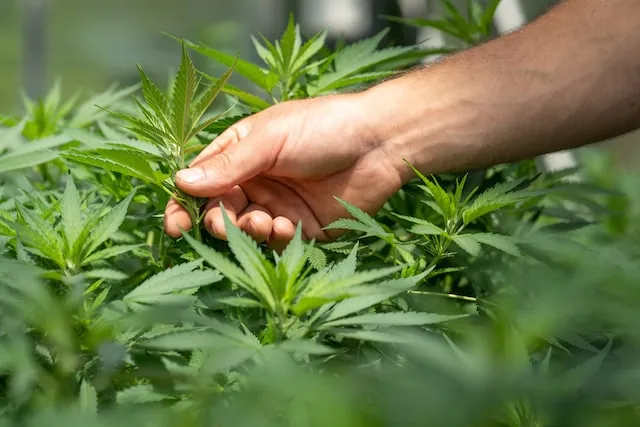The Most Opioids are Dispensed in These Louisiana Parishe
The opioid crisis has ravaged communities across the United States, and Louisiana is no exception. In 2021, the state ranked 19th in the nation for drug overdose deaths, with an age-adjusted rate of 24.5 deaths per 100,000 population. This alarming statistic highlights the urgent need to address the opioid crisis in Louisiana.
Opioid Dispensing Rates: A Parish-Level Perspective
While opioid overdose deaths are a statewide concern, the crisis is not evenly distributed across Louisiana. A recent analysis of data from the Centers for Disease Control and Prevention (CDC) revealed that opioid dispensing rates vary significantly from parish to parish.
| Parish | Opioid Dispensing Rate (per 100 residents) |
|---|---|
| Rapides Parish | 131 |
| Caddo Parish | 123 |
| Lafayette Parish | 97 |
| East Baton Rouge Parish | 89 |
| Evangeline Parish | 84 |
The parishes with the highest rates of opioid prescriptions in 2021 were:
- Rapides Parish (131 prescriptions per 100 residents)
- Caddo Parish (123 prescriptions per 100 residents)
- Lafayette Parish (97 prescriptions per 100 residents)
- East Baton Rouge Parish (89 prescriptions per 100 residents)
- Evangeline Parish (84 prescriptions per 100 residents)
These rates are significantly higher than the national average of 57 prescriptions per 100 residents.
Factors Contributing to High Opioid Dispensing Rates
Several factors may contribute to the high rates of opioid prescriptions in these parishes. Some of the most prominent factors include:
-
Higher rates of chronic pain: Chronic pain is a common condition in Louisiana, and opioids are often prescribed to treat pain.
-
Higher rates of poverty: People living in poverty are more likely to be prescribed opioids, as they may not have access to other forms of pain treatment.
-
Higher rates of healthcare access: Parishes with more hospitals and clinics may have higher rates of opioid prescriptions, as people in these parishes may be more likely to see a doctor and receive a prescription for opioids.
Addressing the Opioid Crisis in Louisiana
The high rates of opioid prescriptions in these parishes are a cause for concern, as they can lead to addiction and overdose. It is essential to take steps to reduce the number of opioid prescriptions in Louisiana, such as:
-
Promoting alternative pain treatments: Prescribers should explore alternative pain management options, such as physical therapy, cognitive-behavioral therapy, and non-opioid medications, before resorting to opioids.
-
Educating prescribers: Prescribers need comprehensive education on the risks and benefits of opioids, including the potential for addiction and overdose.
-
Expanding access to addiction treatment: Communities need increased access to evidence-based addiction treatment programs, including medication-assisted treatment (MAT).
-
Implementing prescription drug monitoring programs (PDMPs): PDMPs allow healthcare providers to track a patient’s opioid prescriptions across different pharmacies, helping to prevent prescription shopping and overprescribing.
Conclusion
The opioid crisis in Louisiana is a complex issue with no easy solutions. However, by addressing the factors contributing to high opioid dispensing rates and implementing effective prevention and treatment strategies, we can work towards a Louisiana free from the devastating effects of opioid addiction.
FAQ’s
What are the parishes with the highest rates of opioid dispensing in Louisiana?
In 2021, the parishes with the highest rates of opioid dispensing in Louisiana were Rapides Parish (131 prescriptions per 100 residents), Caddo Parish (123 prescriptions per 100 residents), Lafayette Parish (97 prescriptions per 100 residents), East Baton Rouge Parish (89 prescriptions per 100 residents), and Evangeline Parish (84 prescriptions per 100 residents).
What factors contribute to high opioid dispensing rates in Louisiana parishes?
Several factors may contribute to the high rates of opioid prescriptions in these parishes, including:
- Higher rates of chronic pain
- Higher rates of poverty
- Higher rates of healthcare access
What can be done to address the opioid crisis in Louisiana?
Several steps can be taken to address the opioid crisis in Louisiana, such as:
- Promoting alternative pain treatments
- Educating prescribers
- Expanding access to addiction treatment
- Implementing prescription drug monitoring programs (PDMPs)
What are the resources available to help people struggling with opioid addiction in Louisiana?
Several resources are available to help people struggling with opioid addiction in Louisiana, including:
- The Louisiana Department of Health’s Opioid Response Plan
- The Louisiana Opioid Surveillance Initiative
- The National Institute on Drug Abuse (NIDA)
- The Substance Abuse and Mental Health Services Administration (SAMHSA)







